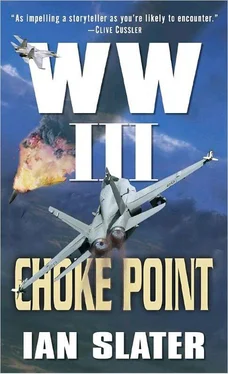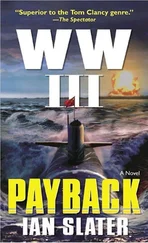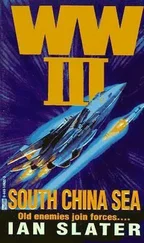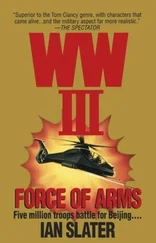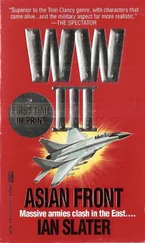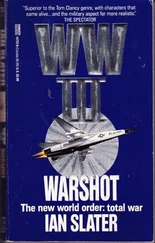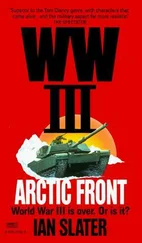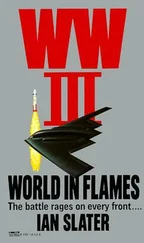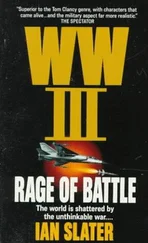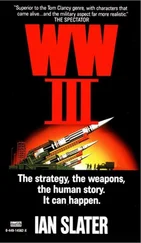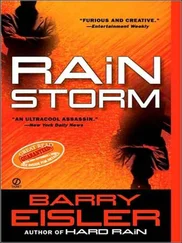From high above the blue of the Taiwan Strait, the ROC F-16 pilots could see both the line to the west, where the deep blue of the ocean met the brown effluent of the Chinese mainland, and the dirty, greenish-brown haze of the combat-polluted zone above and around Kinmen, whose eastern sector was smothered by artillery-laid white smoke. The usual westerlies, however, were blowing the smoke quickly back over Kinmen’s western side, effectively hiding the ChiComs’ howitzer and mortar positions, but simultaneously shrouding the positions of the four Taiwanese infantry battalions who were now moving up and away from the island’s northern and eastern shore and the very positions they had so assiduously practiced to defend. They were moving toward the ChiCom paratroopers who had come in the back door and now occupied the island’s high ground. But with neither army on the island’s western side able to see one another through the man-made fog, the usual confusion of war was exacerbated into utter mayhem.
Both the ChiCom and ROC infantry, normally well-conditioned, began firing at anything that moved in the smoke. The situation was further confused by the close similarity of both sides’ khaki/green field uniforms, which the PLA and ROC had begun copying from the Americans in the late 1990s, and which were markedly unlike the plain PLA green still used by the Chinese armies now routing the Muslim fundamentalists in Kazakhstan. While the new camouflage clothing used by both armies on Kinmen was admirably suited to the brownish green foliage of Taiwan, the ChiCom coast, and offshore islands, the all-but-identical uniforms escalated the usual danger of “friendly fire” to pandemic proportions in the battle.
With both sides continuing to lay smoke during a lull in the westerly winds, the entire island was shrouded in a pungent, bruise-colored smoke reeking of cordite and gasoline exhaust from armored personnel carriers, mobile artillery haulers, and tanks. Vehicles moving through tinder-dry scrub began a series of fires, whose growing ferocity was due to the panic-born thoughtlessness of an ROC infantry platoon moving up toward Mount Taiwu to dislodge a dug-in section of ChiCom machine gunners. The ROC platoon, having been already badly mauled by sniper fire and now down to about twenty men, found their way blocked by a wide rush of splotchy-leafed and highly toxic yaorénmão —“people biting cat” nettles — and also came under heavy ChiCom machine gun fire from thick woods on both flanks. Rather than remain exposed in the relatively open nettle space, a corporal — the platoon’s lieutenant and sergeant having already been killed — yelled for the platoon’s flame thrower to torch the nettles, probably hoping to use the resulting smoke as a blind as well as to clear a way through. As the disembodied orange tongue of liquid fire arced into the nettles, the fire, fanned by the resumption of the winds blowing westward from Taiwan, swept forward so rapidly through the trees that it overtook the ChiCom machine gunners. They were forced to abandon their heavy two hundred — round box magazines in an attempt at retreat. The sickly sweet stench of the ChiComs burning alive mixed with the smell of incinerated equipment.
At the same time, billions of the ubiquitous black insects swirling skyward to escape the smoke that covered the island began to explode, the resulting rapid firecracker noise mistaken by younger soldiers on both sides for the sound of the ChiComs’ lightweight CQ automatic rifles. It was a burst from one of these rifles, known among U.S. and other NATO forces as a 7.5-pound M-16 “rip-off,” that felled Corporal Ahmao Pan, the youngest son of Moh Pan, as he led his rifle section against a ChiCom sapper unit that had quickly braved an intense, overlapping field of ROC mortar fire near the ROC’s big bunker near Pupien on the island’s northern side. The impact of the 3.56 gram bullets, their muzzle velocity among the highest in the ChiComs’ armory of infantry weapons, blew away Pan’s chest and stopped what up till then had been his section’s spirited charge against the enemy sappers.
The pause enabled the ChiCom engineers to place satchel charges against the bunker. The detonations failed to wreck the bunker but created such enormous and simultaneous concussions that the bunker’s ROC defenders were so badly disorientated that they failed to prevent two hundred ChiCom marines from rappelling ashore from Mikhail-B heavy transport helos. The Communist marines captured the huge bunker complex with virtually no opposition.
Within minutes another fleet of Mikhail heavy transport helos arrived, flying at no more than a hundred feet above an increasingly choppy sea that presaged the coming onslaught of Typhoon Jane. The transport helicopter pilots carefully watching the precipitous fall in barometric pressure had already seen satellite pictures showing the towering green columns of rain and debris that were picking up speed after having been initially slowed from 135 miles per hour to 100 mph as they passed over islands in the Philippine Sea. “Jane” had sucked up houses, entire villages, and automobiles two days before in Luzon, spitting them down miles away as the massive weather disturbance, siphoning off the power of smaller systems, continued its destructive course toward Taiwan. The CNN anchor, Marte Price, echoing reports from the East Asian network, announced that Taiwan was reportedly in for what the Chinese traditionally called a “ super typhoon.”
Douglas Freeman heartily despised the media in general, regarding them in an infamous address to a graduating class at Emory as “a bunch of lily-livered liberals” who should be told about wars only when they were over. On CNN, Marte Price had reported his comments as an “antiliberal tirade,” noting that he’d been booed by the student body. The general laughed it off. He and Marte were old friends, though diametrically opposed politically. As he once commented to Norman Raft, his 2nd Army quartermaster, with uncharacteristic embarrassment, he and Marte Price, who had been a reporter in the field during several of his wars, were “what you might call, ah, chemically aligned.”
“What the hell’s that mean, Douglas?” Raft replied. “You screwed her?”
“Damn woman was going to write some nasty stuff about my Sea Air Land Emergency Response Team,” Freeman said, “and for reasons of national security, I had to launch a, ah …”
“Preemptive strike.”
“There you go. For the good of the Army.”
“Was she a good fit?” asked Raft.
“Like a 105 in the breech.”
“A 105 !”
“Metaphorically speaking,” Freeman responded.
“Oh, then it was more like small caliber—”
“That’s enough, Norman. Don’t you have to order some water pumps?”
It was an old joke between them, a reference to the tragic failure of a five-dollar cooling component in the British army’s tanks during the initial and disastrous campaign against Rommel in the Western Desert. The small, defective part had been responsible for terrible losses as overheated engines conked out and became sitting ducks for the Afrika Korps 88s. It was one of the reasons that Freeman, to the disapproval of fellow senior commanders past and present, occasionally sported his distinctive khaki Afrika Korps cap — the swastika removed. The cap reminded him of the two vital attributes of any country’s great lieutenants: first, the ability to get inside your opponent’s head, to think like him tactically as well as strategically; and second, to remember that God is in the details, the water pumps, for instance, without which an entire armored division could grind to a halt. These were details most overburdened generals left to their army’s quartermaster and Freeman always attended to himself.
Читать дальше
